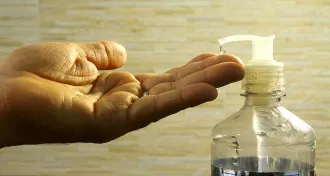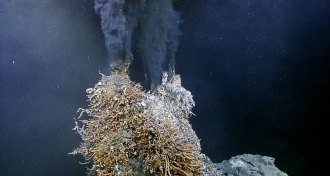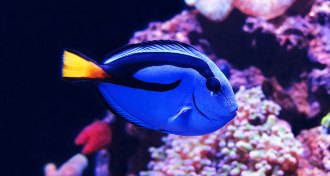All Stories
-
 Life
LifeFor cleanest hands, squirt and count to 30
Rubbing hands for 30 seconds is the most effective way to use hand sanitizer, a study of health care workers finds.
By Laura Beil -
 Life
LifeFor tooth decay microbes, many routes lead to kids’ mouths
Mothers aren’t their children’s only source of bacteria that cause dental cavities, new research shows.
By Laura Beil -
 Math
MathCourts’ use of statistics should be put on trial
Bayesian statistics offer a useful tool for avoiding fallacies in legal reasoning.
-
 Animals
AnimalsThree-toed sloths are even more slothful than two-toed sloths
The three-toed sloth Bradypus variegatus has the lowest field metabolic rate ever recorded, a new study finds.
-
 Oceans
OceansDeep-sea hydrothermal vents more abundant than thought
Ecosystem-supporting hydrothermal vents are much more abundant along the ocean floor than previously thought.
-
 Physics
PhysicsMore events needed to pin down gravitational waves backstory
As more black hole collisions are found, researchers hope to piece together how and where these destructive duos form.
-
 Microbes
MicrobesTests turn up dicey bagged ice
Tests of bagged ice found that 19 percent exceeded recommended thresholds for bacterial contamination.
By Laura Beil -
 Astronomy
AstronomyBulging stars mess with planet’s seasons
On planets orbiting rapidly rotating stars, the seasons can get a little strange.
-
 Archaeology
ArchaeologyLidar maps vast network of Cambodia’s hidden cities
Laser survey unveils the extent, and the mystery, of Southeast Asia’s Khmer Empire
By Bruce Bower -
 Microbes
MicrobesThaw tests turn up dicey bagged ice
Tests of bagged ice found that 19 percent exceeded recommended thresholds for bacterial contamination.
By Laura Beil -
 Animals
AnimalsThat ‘Dory’ for sale may have been poisoned with cyanide
Preliminary results from a new study show that over half of aquarium fish sold in the United States may have been caught with cyanide.
-
 Space
SpaceReaders weigh in on ET and the meaning of life
Reader feedback from the June 25, 2016, issue of Science News